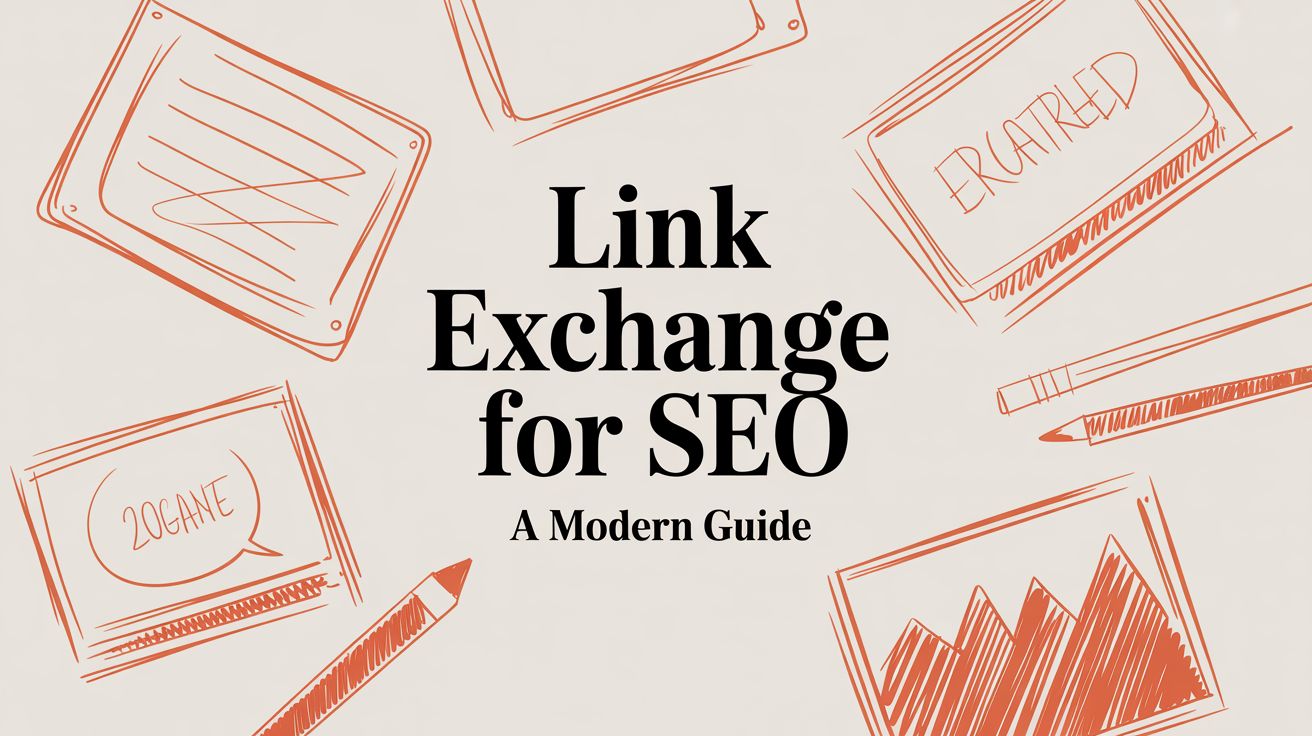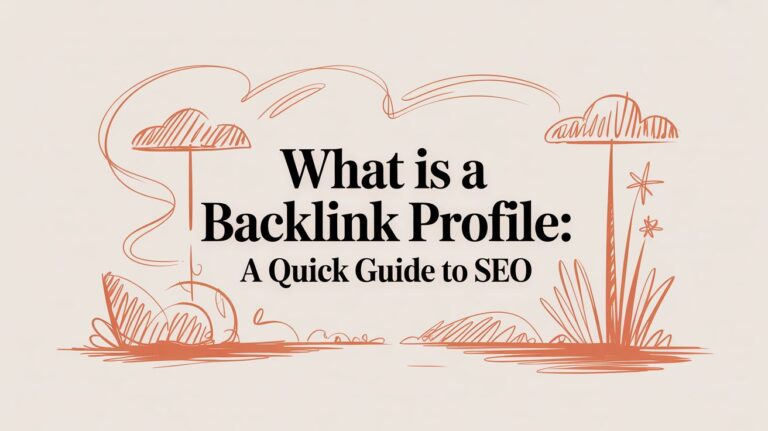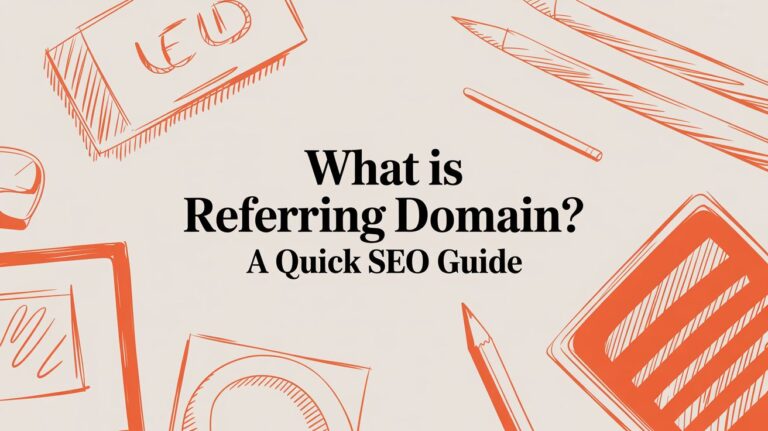A Modern Guide to Link Exchange for SEO
A link exchange for SEO is a simple idea: two websites agree to link to each other. Done right, this partnership is a win-win, helping both sites share audiences, build credibility, and climb search engine rankings.
What Is Link Exchange in Modern SEO?
Forget the old “you link to me, I link to you” trade. A modern link exchange is like a respected coffee shop recommending a fantastic local bakery. The bakery, in turn, tells customers where they source their amazing coffee. It feels natural because it adds value.
That’s the principle for SEO today. The goal is to form partnerships where linking to another site genuinely helps your audience. The practice has evolved from a risky, spammy tactic into a strategy focused on building authentic relationships based on relevance and mutual benefit.
The Evolution From Tactic to Strategy
A decade ago, SEO was filled with sites swapping links with anyone to game the system. Google quickly caught on, penalizing websites for these manipulative “link schemes.”
This forced link exchange for SEO to mature. The goal is no longer about collecting the most links; it’s about quality and relevance.
A successful link exchange is built on relevance and mutual value. It should enhance the user’s experience by connecting them with another useful resource, not just serve as a backlink placeholder.
In practice, a modern link exchange requires strategic thinking. You must find partners with topically aligned content, a solid reputation, and a similar audience. Instead of a direct swap, the focus is on finding content that naturally complements your own, offering your reader a logical and helpful next step.
Link Exchange at a Glance
The table below summarizes the core parts of a modern, effective link exchange strategy.
| Component | Description |
|---|---|
| Core Concept | A mutual agreement between two relevant websites to link to each other’s content. |
| Main Goal | To build authority, drive qualified referral traffic, and improve SEO performance naturally. |
| Biggest Risk | A Google penalty for manipulative linking if exchanges are irrelevant or excessive. |
| Primary Benefit | Acquiring a high-quality backlink from a relevant source while building industry relationships. |
Think of these as the pillars of any link exchange. If an opportunity doesn’t align with these principles, it’s best to walk away.
Weighing the Risks and Rewards of Reciprocal Links
Deciding to pursue link exchanges for SEO is a strategic risk. Get it right, and you can significantly boost your site’s authority and traffic. Get it wrong, and you could face a penalty that takes months—or years—to recover from. Understanding both sides is key before you begin.
The rewards are compelling. A successful link swap earns a powerful backlink from a relevant, authoritative site—a strong positive signal for Google. It also drives qualified referral traffic from visitors already interested in your topic. These partnerships can even lead to valuable industry alliances and future collaborations.
However, the risks are real. The biggest fear for any SEO is a Google penalty for a manipulative “link scheme,” which can destroy your search rankings overnight. Even without a direct penalty, linking to low-quality or irrelevant sites can damage your brand’s credibility and signal to search engines that your site isn’t a trustworthy resource.
The Strategic Balancing Act
The challenge is to build these links without raising red flags. Even experts struggle to maintain a natural-looking backlink profile while using reciprocal links. A recent link-building statistics report found that 39.4% of link builders worry most about creating an unnatural link profile.
This statistic highlights the tightrope you must walk. The goal is to make every link feel earned and editorially placed, even when it’s part of a mutual agreement. This requires a sharp eye for what makes a link profile look natural. To learn more, check out our comprehensive guide to SEO link building.
A strategic link exchange prioritizes the user experience. If the link provides genuine value and feels like a natural next step for the reader, you are on the right track.
To help you visualize this trade-off, let’s break down the potential wins and losses.
Risk vs. Reward in SEO Link Exchanges
This table compares the potential upsides (rewards) and downsides (risks) of reciprocal linking.
| Potential Rewards | Potential Risks |
|---|---|
| Improved Search Rankings – A backlink from a high-authority site can boost your position in SERPs. | Google Penalties – Your site could be penalized for manipulative linking practices. |
| Increased Referral Traffic – A link from a relevant site sends qualified, interested visitors to you. | Damaged Credibility – Associating with low-quality or spammy websites can harm your brand’s reputation. |
| Stronger Domain Authority – Quality backlinks are key to building your site’s overall authority. | Wasted Resources – Bad partnerships yield no positive results and can be costly to fix. |
| Valuable Industry Relationships – Successful exchanges can evolve into long-term collaborations. | Unnatural Link Profile – Obvious patterns of reciprocal links can signal manipulation to search engines. |
Ultimately, the best link exchanges feel less like a transaction and more like a strategic alliance that benefits everyone—especially the audience.
How to Identify Safe and Valuable Link Partners
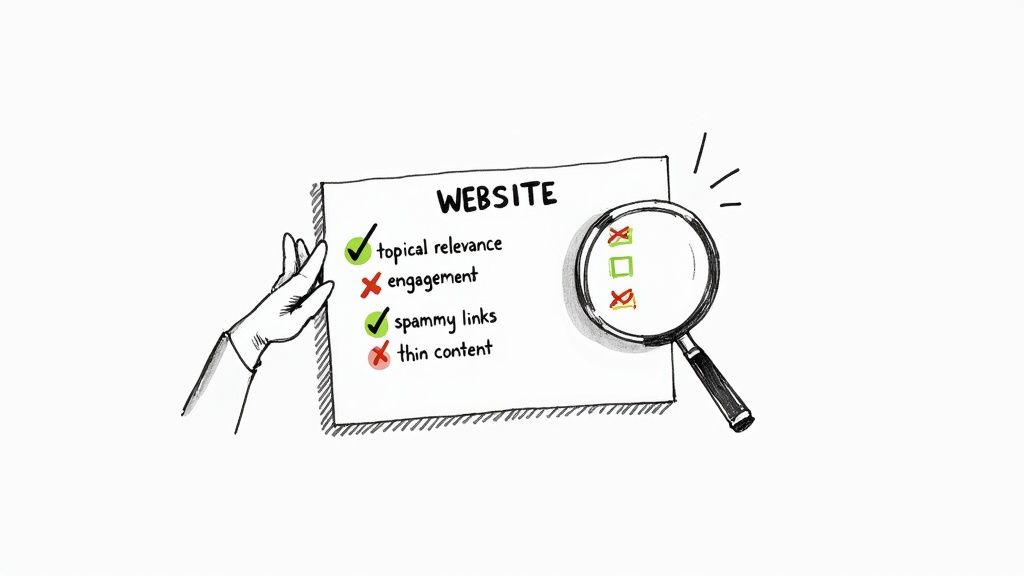
The success of a link exchange for SEO depends entirely on the quality of your partners. Think of it like a business collaboration: you wouldn’t partner with a company that has a bad reputation or an irrelevant audience. The same logic applies to linking.
Your goal is to find websites where your content would be genuinely helpful to their readers. This simple mindset shift turns a basic transaction into a powerful collaboration that benefits everyone, including your search rankings.
So, how do you find them? It starts by looking beyond surface-level metrics like Domain Authority (DA). While DA is a useful starting point, it doesn’t tell the whole story. A valuable partner has the right mix of relevance, a clean backlink profile, and an engaged audience.
Core Qualities of a Strong Link Partner
To find great partners, you need a solid vetting process. Look for clear signals of quality that show a site is trustworthy and a good match for your brand.
Here are the key things to focus on:
- Topical Relevance: This is non-negotiable. Their content must be closely related to your niche. A link from a pet grooming blog to your financial software site makes no sense to users or search engines.
- Consistent Content Quality: Read their articles. Is the content well-researched, original, and helpful? A site that consistently publishes great content is seen as an authority by both Google and readers.
- Genuine Audience Engagement: Look for signs of an active community. Are people leaving thoughtful comments? Is their social media active? Do they have healthy organic traffic? This proves a real audience is paying attention.
- Healthy Backlink Profile: Use an SEO tool to check who links to them. A strong site will have backlinks from other respectable, relevant websites, not a list of spammy directories.
Vetting a potential link partner isn’t just about avoiding penalties; it’s about boosting your brand’s credibility. A link from a respected site acts as a powerful endorsement.
Red Flags to Watch Out For
Knowing what to avoid is as important as knowing what to look for. A bad partnership can waste time and actively harm your SEO. Dodging toxic websites is a crucial part of a safe link exchange strategy.
According to this industry report, 89% of SEO specialists view spammy outbound links as a major red flag when vetting a potential partner.
Keep an eye out for these warning signs:
- Thin or AI-Generated Content: If a site is full of shallow, poorly written articles, it offers no real value. Avoid it.
- Aggressive Monetization: Is the site covered in ads and affiliate links? This often signals a low-quality “link farm” built for profit, not users.
- Irrelevant Outbound Links: A site linking out to a random mix of unrelated topics—like casinos, payday loans, and crypto—is a huge red flag.
- Sudden Drops in Traffic: A sharp, unexplained drop in organic traffic could be a sign of a Google penalty. You don’t want to get involved.
Finding the right partners takes work, but the payoff is significant. By focusing on relevance and genuine value, you build a network that supports long-term, sustainable growth. For more insights on building a strong digital presence, check out the resources at BlazeHive.
A Blueprint for Natural Link Exchange Outreach
Successful link exchange outreach is not a cold sales pitch. It’s a professional introduction between two businesses with common ground. You aren’t just asking for a link; you are starting a conversation about mutual benefit. Sending a generic, copy-pasted email is the fastest way to get ignored.
Personalization is key. Before writing an email, spend time with your potential partner’s content. Did you enjoy a specific article? Mention it. Do you have a resource that perfectly complements a topic they covered? Point that out. This simple step shows you’ve done your homework and respect their work, setting you apart from the 90% of outreach emails that are ignored.
Crafting the Perfect Pitch
Your outreach email must be concise, professional, and focused on value. A long, rambling message will lose their attention instantly. Get straight to the point and answer their unspoken question: “What’s in it for me?”
A winning pitch includes these four elements:
- A Personalized Opener: Start by referencing something specific. For example, “I really valued the insights in your recent post on sustainable marketing…”
- The Value Proposition: Show them exactly how a link to your content benefits their audience.
- A Specific Suggestion: Don’t make them guess. Pinpoint the exact page and a natural spot where your link would add value. This makes it easy for them to say “yes.”
- The Offer of Reciprocity: Clearly state the mutual benefit of the link exchange for SEO. Let them know you’d be happy to find a relevant place on your site to link back to their content.
The Art of Contextual Placement
Where a link is placed is as important as the link itself. A link hidden in a footer or on a generic “partners” page offers little SEO value and can look spammy.
The gold standard is a contextual link, woven naturally into the body of an article where it serves a real purpose for the reader.
For example, a link to your guide on project management software fits perfectly inside a blog post about “Tips for Improving Team Productivity.” The link acts as a helpful, logical next step. To learn how to create content that attracts these links, see our guide on effective content creation.
A link exchange should never feel forced. The best partnerships occur when the link is so contextually relevant that it would make sense even without a reciprocal agreement.
Ultimately, a natural link exchange creates a better experience for the reader. When you personalize your outreach, provide genuine value, and ensure links fit the context, you build partnerships that search engines reward.
Smarter Alternatives to Direct Link Exchanges
Direct reciprocal linking isn’t the only way to build authority. While a simple link exchange for SEO can work, more sustainable results often come from smarter, lower-risk strategies. It’s time to move beyond the “I’ll link to you if you link to me” mindset and explore collaborations that build a more natural and powerful backlink profile.
Think of it as diversifying an investment portfolio. Instead of relying on one tactic, you build a versatile toolkit that strengthens your site from multiple angles, making your SEO more resilient to algorithm updates.
Guest Blogging on Authoritative Sites
Guest blogging is a proven alternative. The concept is simple: you write a high-quality, helpful article for another website in your niche. In return, you typically get a contextual link back to your site within the article or in your author bio.
It’s a win-win. The host site gets excellent, free content, and you get a powerful, editorially-approved backlink from a relevant source. This is a link earned by providing value—exactly what Google wants to see.
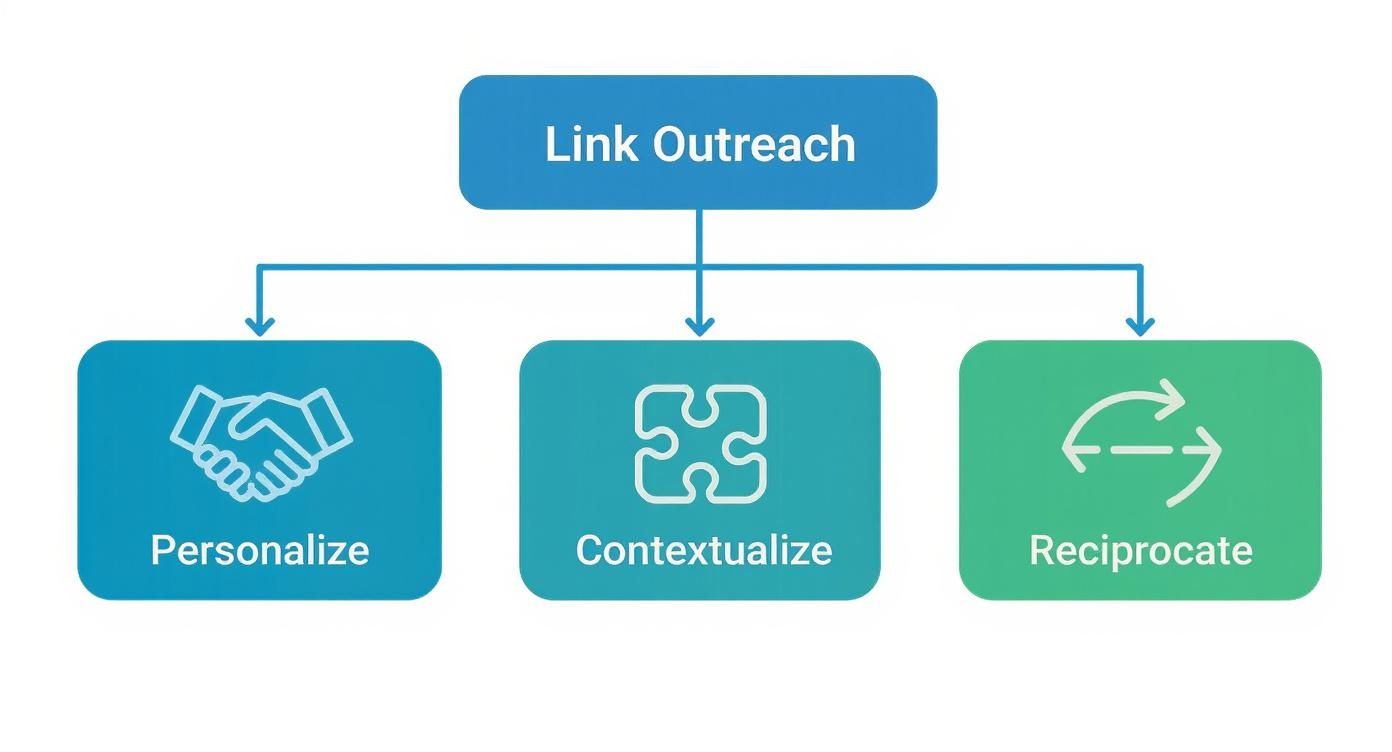
As the infographic shows, successful outreach comes down to personalization, relevance, and proving mutual benefit. Nail these three, and you’re ahead of most of the competition.
Broken Link Building
This is a clever tactic. Broken link building involves finding dead links on other websites and offering your content as a replacement. You use a tool to find resources on high-authority sites in your niche that point to 404 error pages.
Once you find a broken link, you reach out to the site owner. You’re not just asking for a link—you’re doing them a favor. You politely point out the broken link and suggest your own relevant guide as an easy fix. Because you’re helping them improve their site and user experience, response rates can be surprisingly high.
Creating Expert Resource Pages
This is a powerful long-term strategy. The idea is to create a “linkable asset”—a comprehensive resource page that becomes the definitive source on a topic. Think ultimate guides, original research, or massive curated lists that are so good they are impossible to ignore.
A valuable resource page attracts links organically because it serves as a definitive reference. Other bloggers and journalists will naturally link to it when they need to cite authoritative data or provide readers with a thorough explanation.
This strategy flips the script. Instead of chasing links, you create something so valuable that people in your industry want to link to it. It’s a long-term play, but it’s one of the best ways to establish your brand as an authority and build a powerful foundation of natural backlinks.
Got Questions About Link Exchanges? We’ve Got Answers.
Link exchanges can feel like walking a tightrope. It’s a powerful strategy, but you need to know the rules. Let’s answer the most common questions about using link exchanges for SEO.
Is Link Exchange a Safe SEO Strategy?
Yes, but only when done right. The key is relevance and genuine value for the reader.
Think of it as a professional referral. If you and another expert recommend each other because it genuinely helps your clients, that’s a win-win that Google sees as a natural connection. The danger comes from swapping links with random, unrelated websites just to get a backlink. That raises a red flag for search engines and can lead to penalties. The intent behind the exchange is everything.
How Do I Find Good Link Exchange Partners?
Finding the right partners is crucial. Look for websites in the same niche that share your audience and commitment to quality. A great partner isn’t just a site with a high domain authority; it’s one whose content truly complements yours.
Use this quick checklist when vetting partners:
- Topical Alignment: Is their content directly related to your industry?
- Content Quality: Are their articles well-researched, original, and helpful?
- Audience Engagement: Do they have an active community with real comments and social media conversations?
- Healthy Link Profile: Do they link out to spammy or sketchy websites? A clean outbound link profile is a very good sign.
Can Link Swapping Hurt My SEO?
Absolutely. A poorly handled link exchange for SEO can destroy your rankings. Google has become very effective at detecting unnatural or manipulative linking schemes.
A bad link exchange can trigger a penalty that causes your organic traffic to plummet. This often happens when you partner with irrelevant sites or engage in excessive link swapping that leaves an obvious, unnatural footprint.
To stay safe, always choose quality over quantity. One great link from a highly relevant partner is far more valuable and safer than a hundred links from questionable sources. Before agreeing to an exchange, ask yourself: “Does this link actually help my reader?” If the answer isn’t a clear “yes,” walk away.
How Many Links on a Page Is Too Many?
There is no magic number. Outdated advice suggested keeping links under 100, but today, it’s all about user experience, not an arbitrary count.
Instead of counting, think about purpose. Every outbound link should guide your reader to a helpful, relevant resource that adds context. If a page is cluttered with dozens of links, it becomes noisy and difficult to read. A good rule of thumb is to only add a link where it truly enhances your point.
Finding partners and managing outreach for link exchanges can be very time-consuming. BlazeHive helps you cut through the noise with an AI-powered marketplace that connects you with relevant, pre-vetted websites in your niche. It’s a more efficient way to build high-quality backlinks without the manual grind. You can discover a smarter way to build links at BlazeHive

